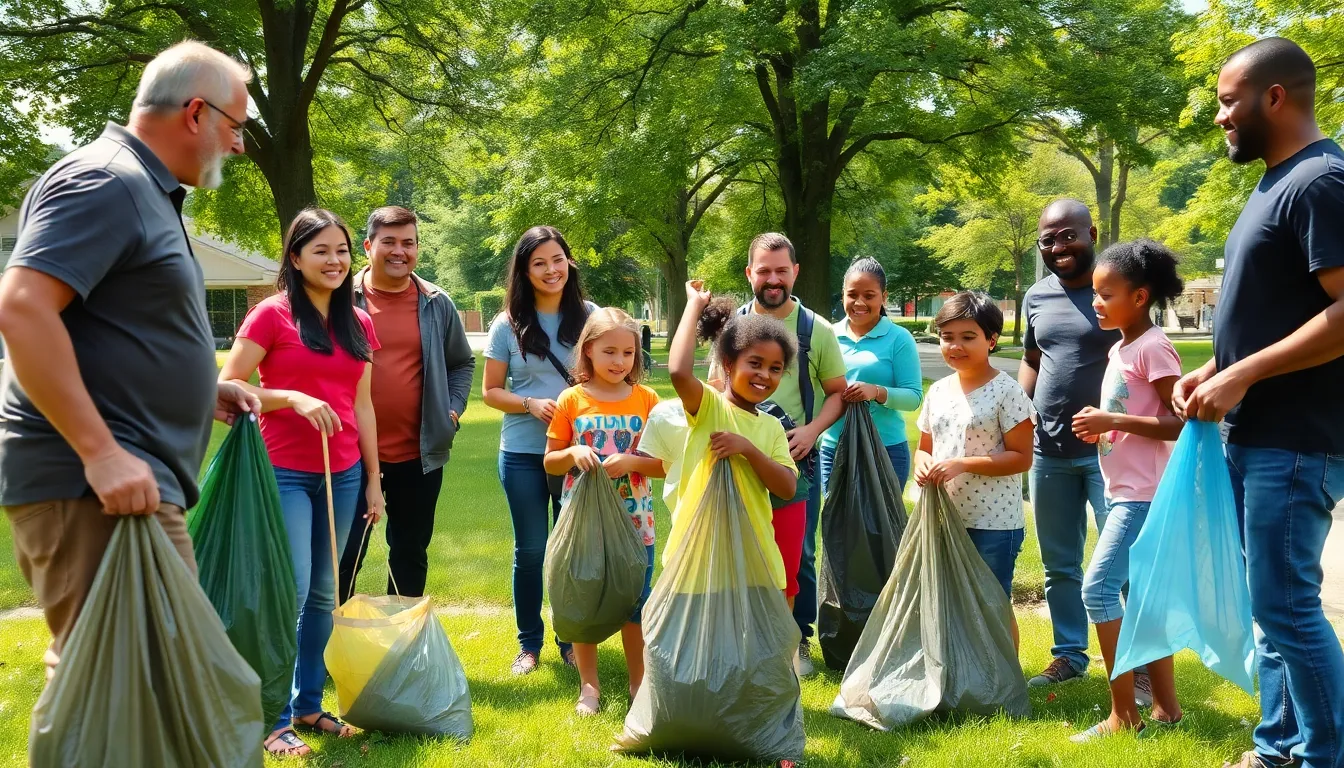The Best Fluffy Pancakes recipe you will fall in love with. Full of tips and tricks to help you make the best pancakes.

What Is Community Engagement?Unlock the Secrets to Thriving Neighborhoods
Community engagement isn’t just a buzzword tossed around at meetings—it’s the secret sauce that transforms neighborhoods into vibrant hubs of activity. Imagine a place where people come together, share ideas, and work towards common goals, all while having a good laugh. Sounds like a dream, right? But it’s happening all around us, and it’s time to dive into what makes this connection so powerful.
What Is Community Engagement
Community engagement involves active participation by individuals within a neighborhood or local area to foster connections and drive positive change. This process encompasses a broad range of activities designed to build relationships among residents, organizations, and stakeholders. Engaged communities thrive through collaboration, idea-sharing, and collective goal pursuit.
Individuals often participate in public forums, workshops, or volunteer opportunities, ensuring diverse perspectives contribute to decision-making. Moreover, sustained dialogue between community members and local officials creates a transparent environment that enhances trust. Key benefits of community engagement include improved quality of life, increased civic participation, and stronger social networks.
Events such as community clean-ups, cultural festivals, or educational programs serve as platforms for collaboration. These initiatives encourage participation while addressing local issues and celebrating achievements. Organizations can amplify their impact by forming partnerships, creating shared resources, and developing neighborhood initiatives that meet specific community needs.
Engaged communities show higher levels of satisfaction, less crime, and increased resilience against challenges. Residents feel a sense of ownership over their environment; their input drives meaningful change. When people unite to address concerns, they build networks that support each other through various hardships.
Fostering community engagement remains essential for sustainable development. Successful engagement builds lasting relationships, encouraging individuals to work together towards common goals, ultimately leading to vibrant and active neighborhoods.
Importance of Community Engagement

Community engagement fosters strong connections, leading to vibrant neighborhoods and the shared vision among residents. It cultivates a culture where collaboration thrives.
Benefits for Communities
Engaged communities enjoy numerous advantages. Improved quality of life ranks high, as residents participate in local decision-making. Lower crime rates often accompany higher community involvement. Participatory activities like clean-ups and cultural events create a sense of ownership among residents. Greater resilience surfaces, allowing communities to adapt and respond to challenges effectively. Satisfaction levels increase, contributing to a more cohesive social fabric. Overall, robust community engagement significantly enhances the livability and vibrancy of neighborhoods.
Benefits for Organizations
Organizations gain valuable insights through active community engagement. Strengthened relationships with residents lead to improved trust and loyalty. Increased participation in organizational events drives higher attendance and visibility. Organizations may receive feedback directly from community members, guiding future initiatives. Collaborative projects showcase organizational commitment to the community, enhancing reputation. Engaged organizations often witness innovation, as ideas flow freely between residents and staff. Thus, nurturing community connections proves beneficial for organizational growth and sustainability.
Key Principles of Community Engagement
Community engagement thrives on adherence to specific principles that enhance its effectiveness. These principles foster collaboration and ensure meaningful participation among all community members.
Inclusivity and Diversity
Inclusivity creates a space where everyone feels welcome. Engaging diverse populations enriches the dialogue and leads to comprehensive solutions. Representation matters, as it ensures that various perspectives shape decision-making. Fostering relationships with underrepresented groups builds trust and leads to more innovative community initiatives. Participation from all demographics provides a broader understanding of needs and aspirations. Effective engagement reaches out to individuals across backgrounds, creating a sense of belonging and ownership.
Transparency and Trust
Transparency builds the foundation for trust essential in community engagement efforts. Open communication about goals, processes, and outcomes fosters credibility among residents. Sharing information regularly lets community members know how their input shapes outcomes. Trust grows when initiatives are approached honestly and inclusively. Consistent updates and feedback loops enhance relationships between organizations and community members. When residents feel informed and valued, their involvement remains strong, leading to sustained engagement over time.
Methods of Community Engagement
Engaging a community involves various methods that cater to different preferences and circumstances. Both in-person and digital strategies play crucial roles in fostering participation and connection.
In-Person Engagement Strategies
Face-to-face interactions strengthen relationships among community members. Community meetings provide vital spaces for sharing ideas and discussing local issues. Through social events, such as festivals and neighborhood gatherings, residents bond while enjoying communal activities. Workshops offer hands-on experiences, allowing participants to collaborate on projects. Volunteering opportunities encourage collective action, giving individuals a chance to contribute positively. By incorporating diverse in-person strategies, communities enhance participation and ensure that every voice contributes to the discussion.
Digital Engagement Tools
Online platforms facilitate broader reach and accessibility for community engagement. Social media channels enable quick dissemination of information while fostering discussions among residents. Websites serve as centralized hubs for news, events, and resources, making it easy to connect with local organizations. Email newsletters keep community members informed about upcoming activities and initiatives. Interactive tools, like surveys and polls, gather feedback and involve residents in decision-making. By leveraging digital tools, communities create inclusive spaces for participation, enhancing overall engagement and collaboration.
Challenges in Community Engagement
Community engagement faces several challenges that can hinder effective participation. Identifying and addressing these obstacles is essential for fostering vibrant communities.
Common Obstacles
Lack of awareness among residents limits participation in community initiatives. Individuals often remain uninformed about available activities and resources. Socioeconomic barriers also play a significant role; residents in low-income areas might struggle to engage due to time constraints or transportation issues. Trust deficits can deter participation, with past negative experiences leading to skepticism about community efforts. Cultural differences may create barriers, making it difficult for diverse groups to connect and communicate effectively. All these obstacles highlight the importance of tailored approaches to encourage engagement.
Overcoming Barriers
Leveraging existing community resources enhances engagement efforts. Organizations can establish targeted outreach programs to raise awareness among residents, ensuring that everyone understands available opportunities. Providing flexible options, such as virtual meetings, accommodates diverse schedules. Building trust requires consistent and transparent communication, encouraging community members to participate actively. Facilitating cultural exchange events fosters connection among diverse groups, promoting understanding. Developing strong partnerships with local leaders can also amplify outreach and increase participation across the community. Through strategic measures, communities can effectively overcome these barriers and enhance engagement levels.
Conclusion
Community engagement is a vital component of thriving neighborhoods. By fostering connections and encouraging active participation, communities can create an environment where everyone feels valued and heard. The benefits extend beyond individual satisfaction, enhancing the overall quality of life and resilience of the community.
As individuals and organizations work together, they build trust and loyalty that contribute to a more cohesive social fabric. Embracing inclusivity and diversity ensures that every voice matters, leading to innovative solutions and collective growth.
Ultimately, prioritizing community engagement paves the way for sustainable development, enriching both the community and its members.
